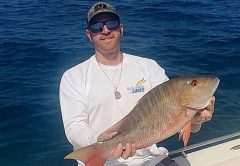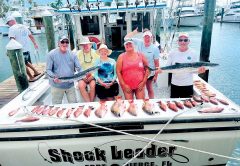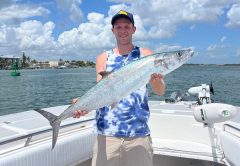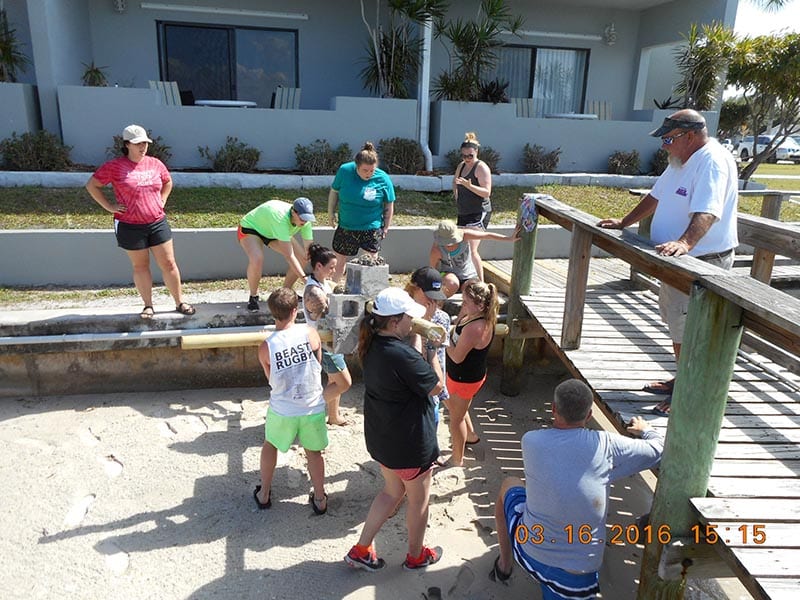
St. Lucie County Artificial Reef Program Update: January 2018
In 2005, a local dive shop, Dive Odyssea, noted that they needed a shallow water dive site that they could use as a training site when seas were too rough to dive offshore. Krista Marr, then a senior at the University of Central Florida, tired of taking her dive classes to the Blue Heron Bridge in Palm Beach County, researched creating an inshore dive site in St. Lucie County.
After Krista’s research, the St. Lucie County Artificial Reef Program decided that a dive site near the Fort Pierce Inlet would be an excellent location for creating an inshore dive site. The water near the inlet is frequently clear on incoming tide, the inlet is the major route for any fish, turtles, and crustaceans that use both the Indian River Lagoon and the Atlantic Ocean during their life history, and local residents have remarked that a well-developed wormrock reef existed in the Fort Pierce Inlet prior to being impacted by channel dredging in the 1990s.
In 2016, biological justification for an inlet area dive site was supported by construction of four subtidal oyster reefs near the Fort Pierce City Marina. Post-deployment dives of these four reefs revealed that juvenile lobster, stone crab, yellowtail snapper, black seabass, red grouper, as well as other fishes, colonized the oyster reef within days of deployment. Unfortunately, there were state regulations dating back more than 50 years, which prohibited diving within 1000 feet of either the North Causeway or the South Causeway and throughout the Fort Pierce Inlet.
In late 2016, the Special Acts prohibiting diving near the bridges were repealed, paving the way for an inlet area dive site. Earlier that year, the Dockside Inn had allowed the St. Lucie County Artificial Reef Program to deploy an inexpensive homemade module under a Florida Department of Environmental Protection (FDEP) permit. This was important to show that artificial reef modules can provide additional habitat, as well as form the foundation for an inshore dive site. Volunteers from the Plymouth State University Alternative Spring Break deployed the module in March of 2016 to test whether module was stable, would attract juvenile fishes, and whether it would subside or get fouled with floating debris.
In November 2017, inspection of the module revealed (1) the module was stable and hadn’t been moved by storms including Hurricanes Matthew and Irma, (2) benthic growth had started to accumulate on the surfaces of the module and the growth did not prevent water from circulating through cavities in the module, (3) the module had only subsided three-inches, and (4) the module was attracting several fish including a juvenile African pompano.
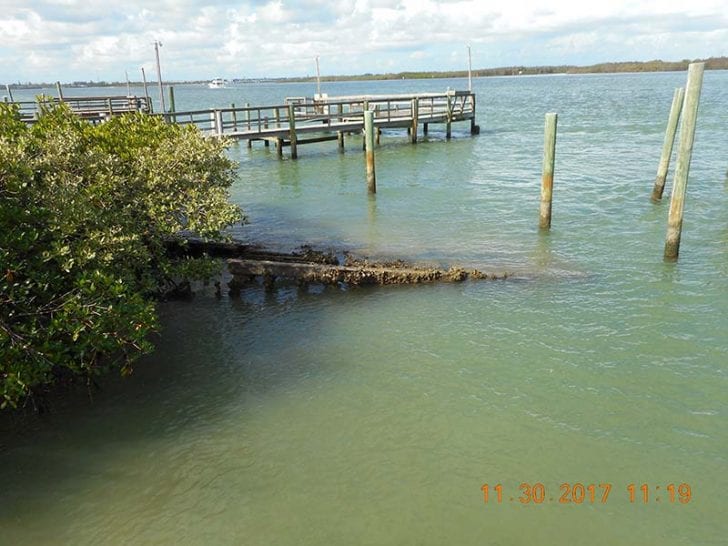
In December 2017, MMPS Environmental and the County Artificial Reef Coordinator moved the module to allow for replacement of docks behind the Dockside Inn and placed the module next to the adjacent red and black mangroves. Representatives from Brothers Marine Construction, DLS Environmental Services, Dockside Inn, the FDEP, met to ensure that neither the mangroves nor the module would be damaged. Portions of a 50-year old barge sunken near the mangroves will also be moved, if possible, to a nearby location for use in the inshore dive site.

The location of the St. Lucie County Inshore Dive Site has not been chosen yet. Based on the performance of subtidal oyster reefs and the volunteer oyster reef module, this latest reef should be deployed somewhere near the Fort Pierce Inlet to ensure continued development of recreational diving in the County as well as aid in fish movements between the Indian River Lagoon and the Atlantic Ocean.
For more information on the St. Lucie County Artificial Reef Program, restoration of wormrock reef in the Fort Pierce Inlet, a St. Lucie County inshore artificial reef, or juvenile fish habitat artificial reef modules, contact Jim Oppenborn, St. Lucie County Coastal Resources Coordinator at oppenbornj@stlucieco.org or (772)462-1713. Similarly, if divers are interested in learning more on the rules and regulations concerning diving near the Fort Pierce Inlet, they should contact Mason Smith at Mason Smith, Florida Fish and Wildlife Conservation Commission Biological Scientist IV at Mason.Smith@MyFWC.com.

